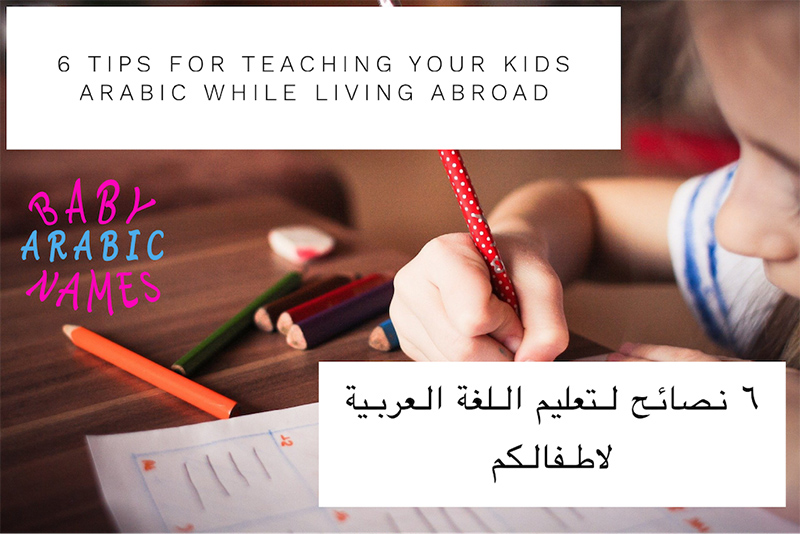As an Arab mom of two beautiful little girls living abroad, I want to make sure they become fluent in Arabic, our mother tongue. My goal for them is to speak, read, and write the Arabic language on top of being fluent in English.
Arabic is not an easy language to learn properly. Yet at an early age, research shows that kids can learn several languages at a time, so don’t give up easily. It all starts with daily communication at home. Forcing yourself to use Arabic as the only language to communicate with your kids is the simplest place to start.
After all, I tell my kids, “you are lucky to be bilingual and have the chance to learn Arabic and English at the same time”.
Kids don’t like to be forced to do anything. If you already have kids, you probably already know this, and if you don’t have any yet, you will learn soon enough.
Here are the 6 Essential Tips for teaching your kids Arabic while living abroad:
1- Speak only Arabic at home. Moms and Dads are the only source of Arabic for your kids. Save the English to when you’re outside the house or when the kids are playing with English speaking children.
2- When talking to you kids, insist that they answer you only in Arabic. We have a rule at our house, if English is spoken to mom or dad, we request that they rephrase it in Arabic and that’s the only way we will answer them.
3- Even though we believe screen time should be very limited, throw in there Arabic children shows, or even Arabic versions of the English shows in there.
4- Read them stories in Arabic. Make sure to place your finger on each word as they follow along, so they can become familiar with the letters.
5- Sing to your kids in Arabic. Get them involved and have them sing along or at least rhyme along to the song at home and especially in car rides.
6- Teach them to read and write basic Arabic. This maybe the hardest step as it involves real effort on your part as an Arabic speaking parent.
I started teaching my three year old daughter the alphabet by printing her work sheets to trace and color letters.
She is a bit stubborn, and has little patience, but loves learning. Her frustration occasionally causes her to scratch with a pencil all over her worksheet. I swallow my dismay, erase the scratches, then help her relax and try again. Trust me, that will test anyone’s patience.
On the other hand, my daughter loves arts and crafts especially play dough. We started at an early age doing play dough projects which included numbers and English letters. Out of necessity, in order to teach my daughter Arabic without the headache, my husband and I developed this brilliant set of Arabic alphabet play dough stamping set. After making testing tons of designs and prototypes with our own kids, we came up with a very ergonomic design that fits perfectly in the hands of children. The stamps are robust and a fun to handle, with a visible arrow that points north, ensures that the Arabic letters are always in the correct orientation when stamping them into the play dough of your choice.
How many times have you heard someone say I studied “fill in the blank” language in school but I don’t recall it.
Remember one thing. If it were easy, everyone would do it. Teaching your children Arabic at home while living outside the Arab World is very important. On top of that, having them maintain their Arabic language skills throughout their childhood is the key to ensuring they stay interested and equipped with this beautiful language throughout their adult life.
You can start here.

